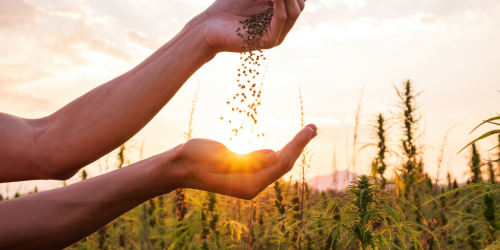In May, the Cool Farm Alliance held the 2023 Annual Meeting ambitiously titled, “Harvesting Actions for Impact at Scale.” While leaning into the urgency of the moment in the face of advancing climate change, the annual meeting had an upbeat, purposeful, and often joyful tone, with leading peers eager to dig in on projects and progress together.
Collaboration was the topic of the first day, which aimed to connect Cool Farm Alliance members, forming partnerships and accelerating collaboration, and showcased use cases for the Cool Farm Tool from Danone, Avebe, Unilever and others.
High on the minds of most Cool Farm Alliance members, were questions about the Cool Farm Tool’s degree of alignment to the draft Land Sector and Removal Guidance coming out of WRI’s GHG Protocol. As with so many tools, the Cool Farm Alliance is working to accommodate this guidance to the extent feasible and delegates got to hear the details of what these accommodations entail.
Similarly, carbon monetisation is a topic that has consistently generated high interest and was one of the early aspirational motivations for the Cool Farm Tool. In response, Daniella Malin, Head of Impact and Partnership, designed and facilitated a breakout session on the topic. Many have long assumed that being able to pay for soil carbon sequestration (and greenhouse gas reductions) is key to unlocking the power of agriculture to help mitigate climate change. As recent press has shown, practice holds great promise and great challenges.
Delegates learned that though still young, some entities now have a few years’ experience enabling carbon payments using the Cool Farm Tool. Buyers in the food and beverage sector use the estimated reductions as “insets” in their Scope 3 accounting rather than as formal carbon market offsets. Ensuring the integrity of these transactions has required a mix of modeling, remote sensing, measurements, and a healthy dose of humility, but this combination seems to be delivering on the promise of both getting more revenue to farmers for good practice and increasing enrollment in the practices and outcomes.
One of the most enlivening speaker provocations was from the community to the community: we, those of us that are not farmers, must stop talking about “getting farmers to change.” Instead, we can use the Cool Farm Tool to look at changing ourselves and how we organise markets and supply chains so that agriculture products that are better for the environment are in higher demand.
Other highlights included:
- Dedicated time to allowing participants to get to know each other through progressive small group interactions. The investment in intentional connections, led to more meaningful conversations and facilitated members finding common ground in interests, activities, perspectives, objectives, and projects.
- Case studies in coffee, rice, dairy, barley, and potatoes showcasing the value of the Cool Farm Tool use at scale to help the industry “speak the same language” while educating, engaging, and taking action.
- Breakout sessions on GHG emissions and carbon quantification in perennial cropping systems, the Dairy and Beef sector, the Cool Farm Tool software development, science and methods pipeline, soil health, biodiversity, and regenerative agriculture
- Provocative speakers that challenged and inspired participants to set bolder intentions for themselves and navigate the crushing truths of climate change and biodiversity loss without losing hope.
- A 2-hour Innovation Space showcased further innovations, from soil carbon measurement to the valuation of ecosystem services, natural assets, and on-farm biodiversity.
Couldn’t attend the 2023 Cool Farm Annual Meeting? Don’t worry – check out our highlights video below.
Or access the Presentation Decks here.









